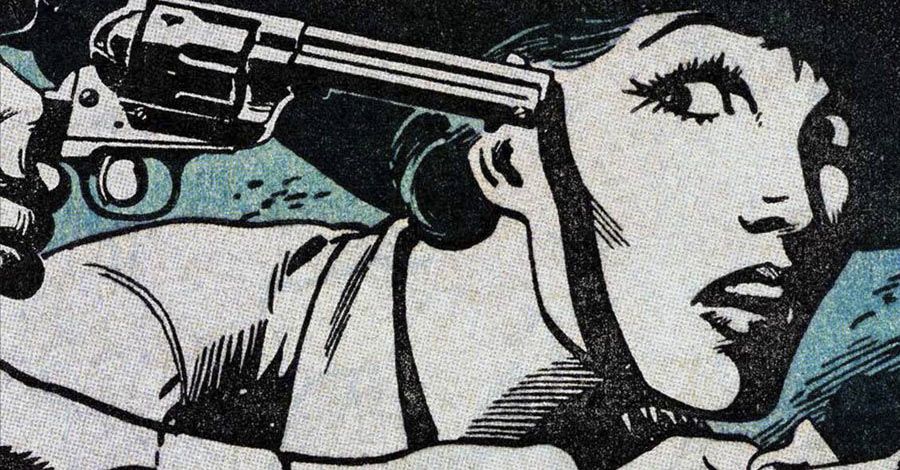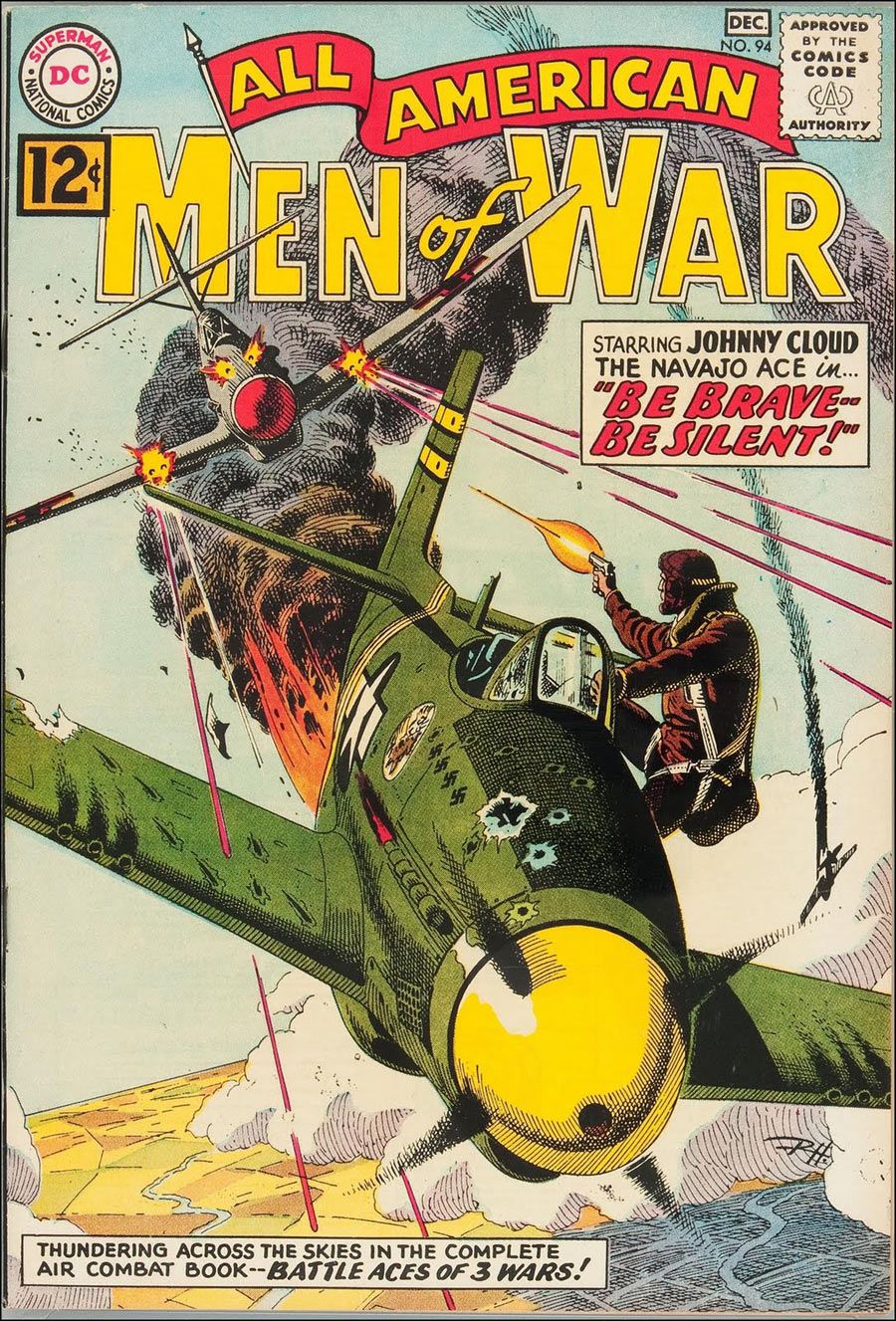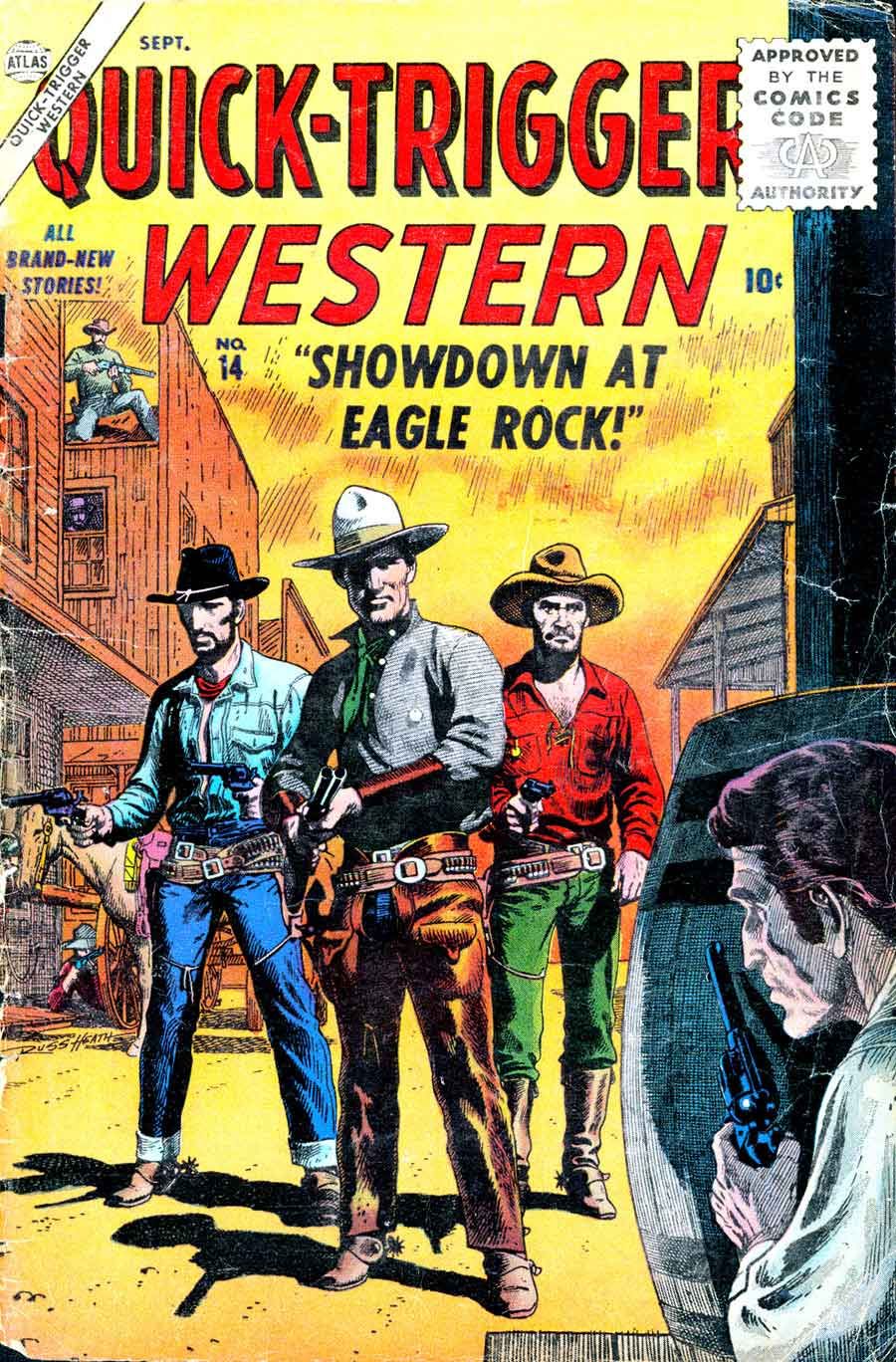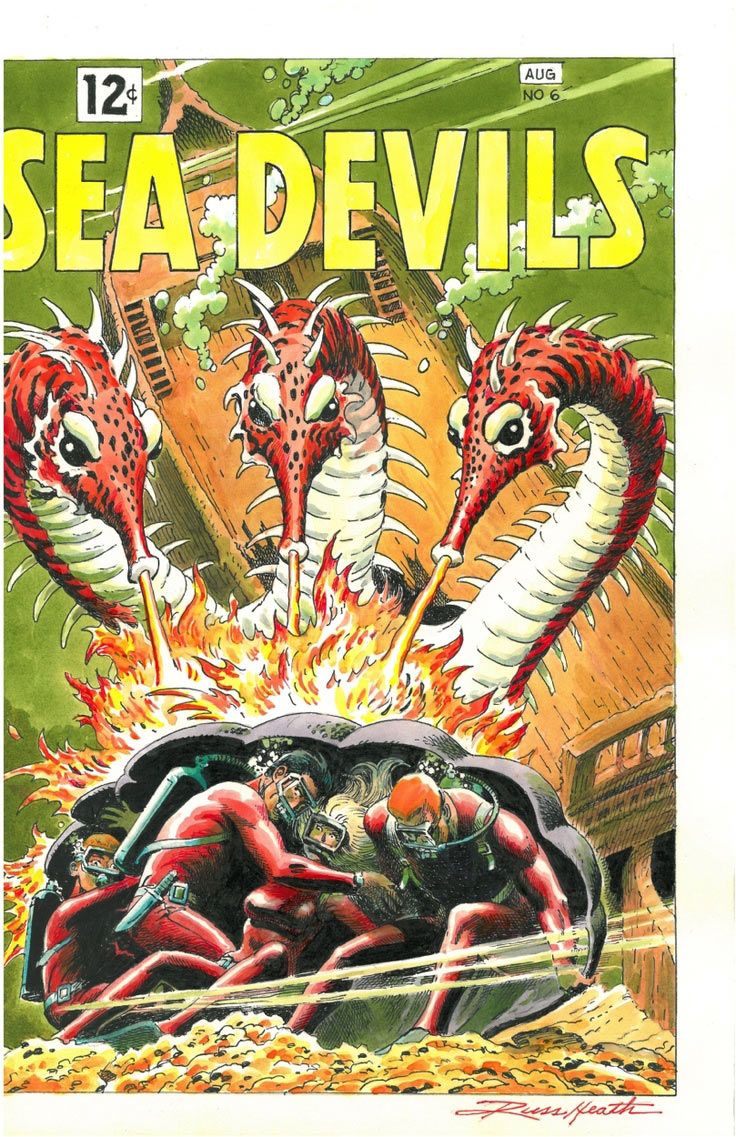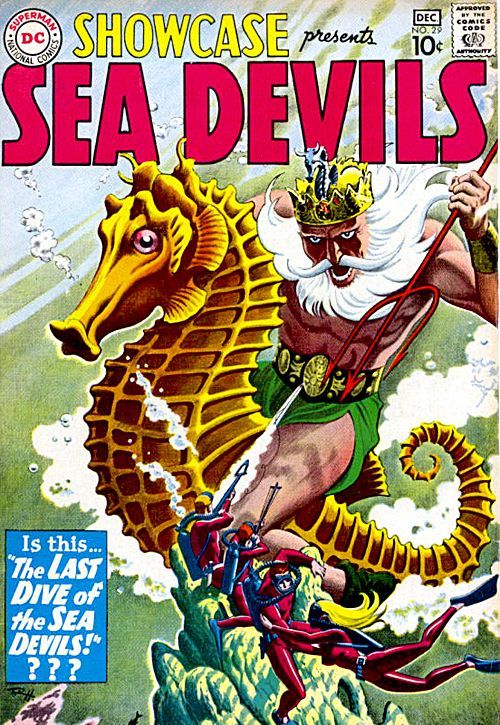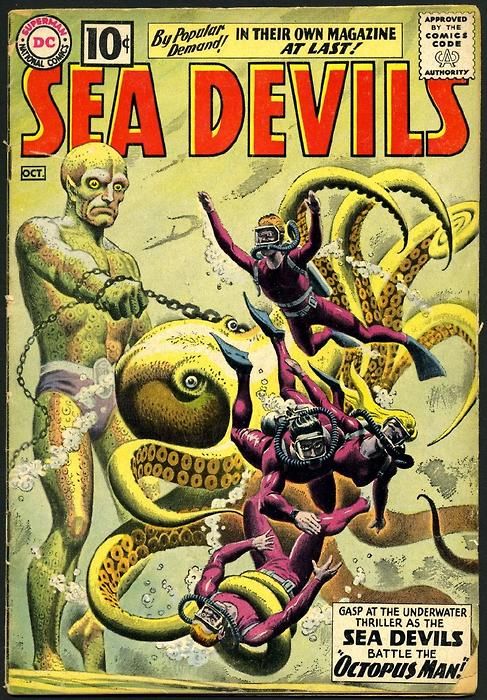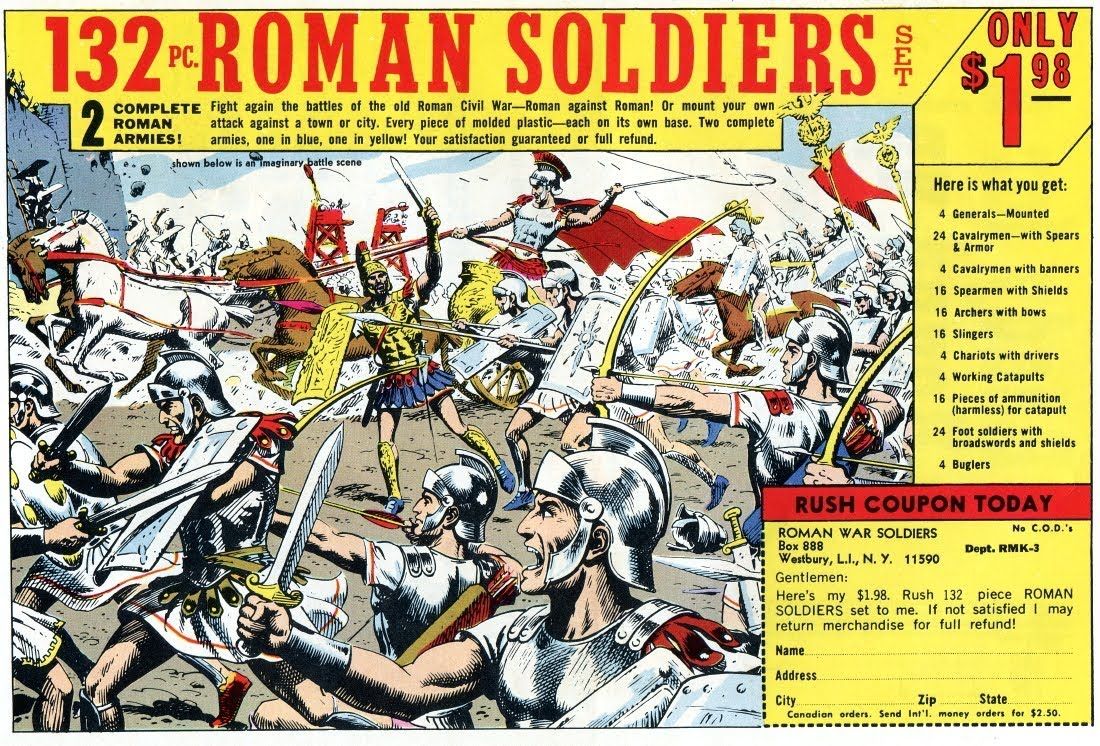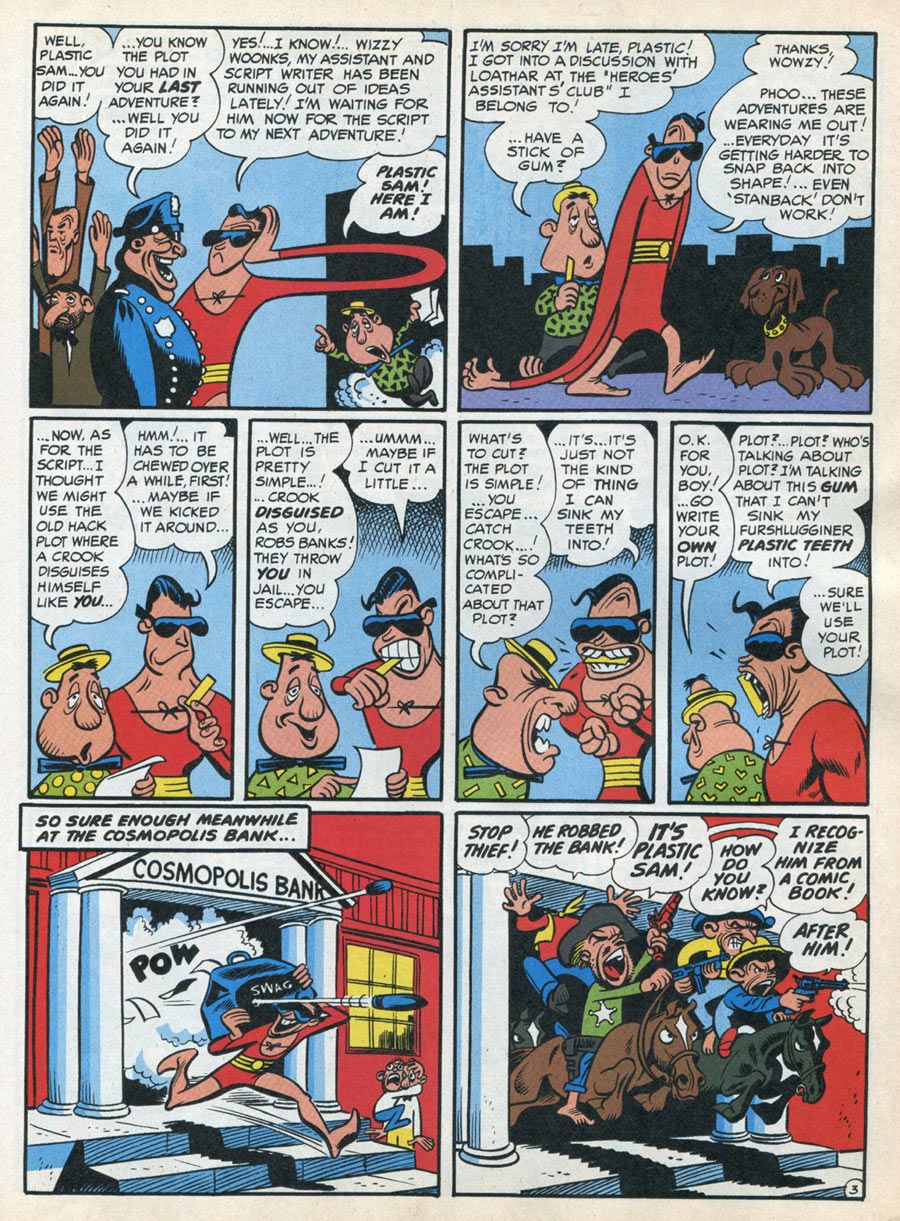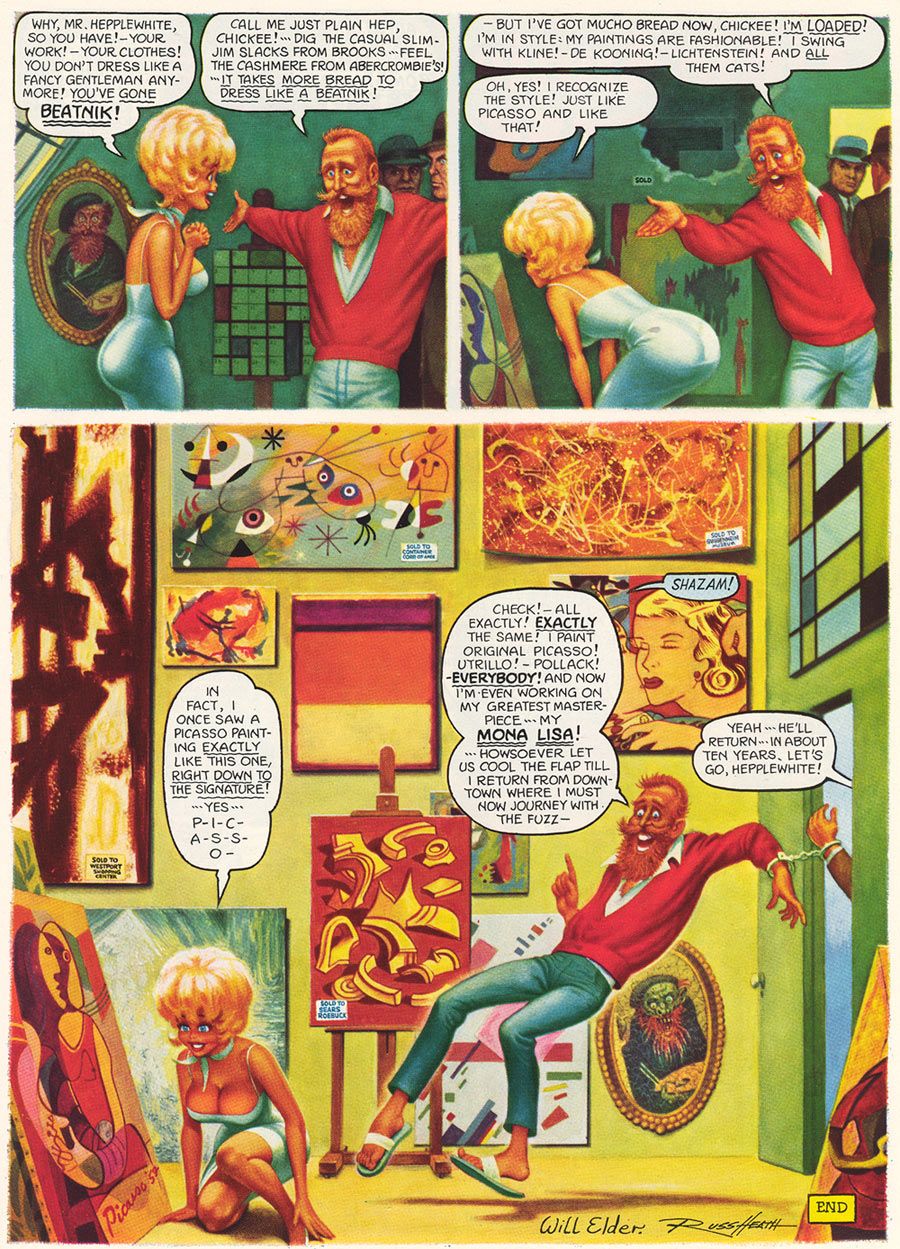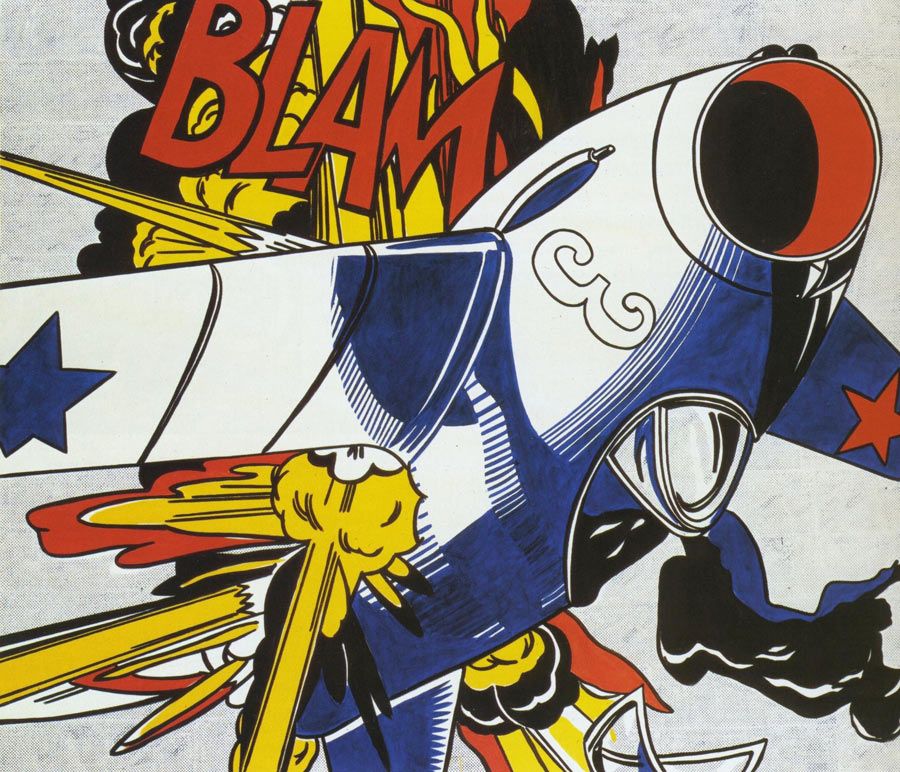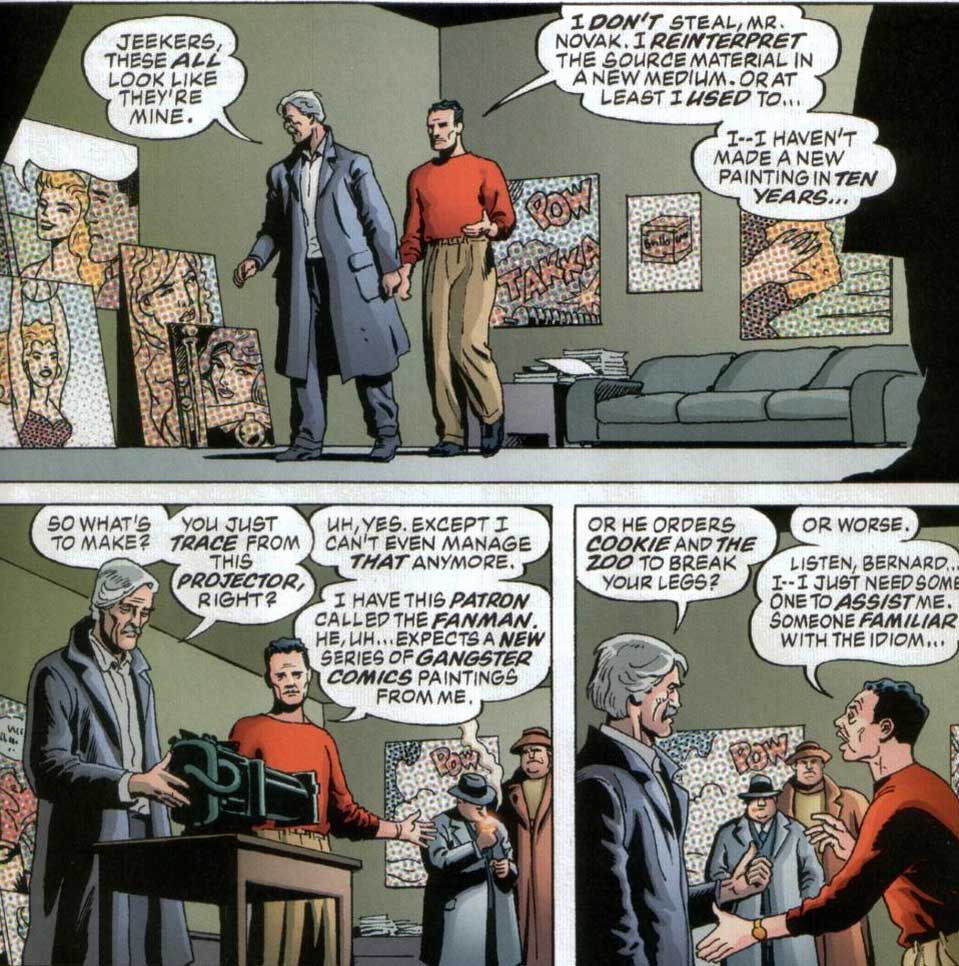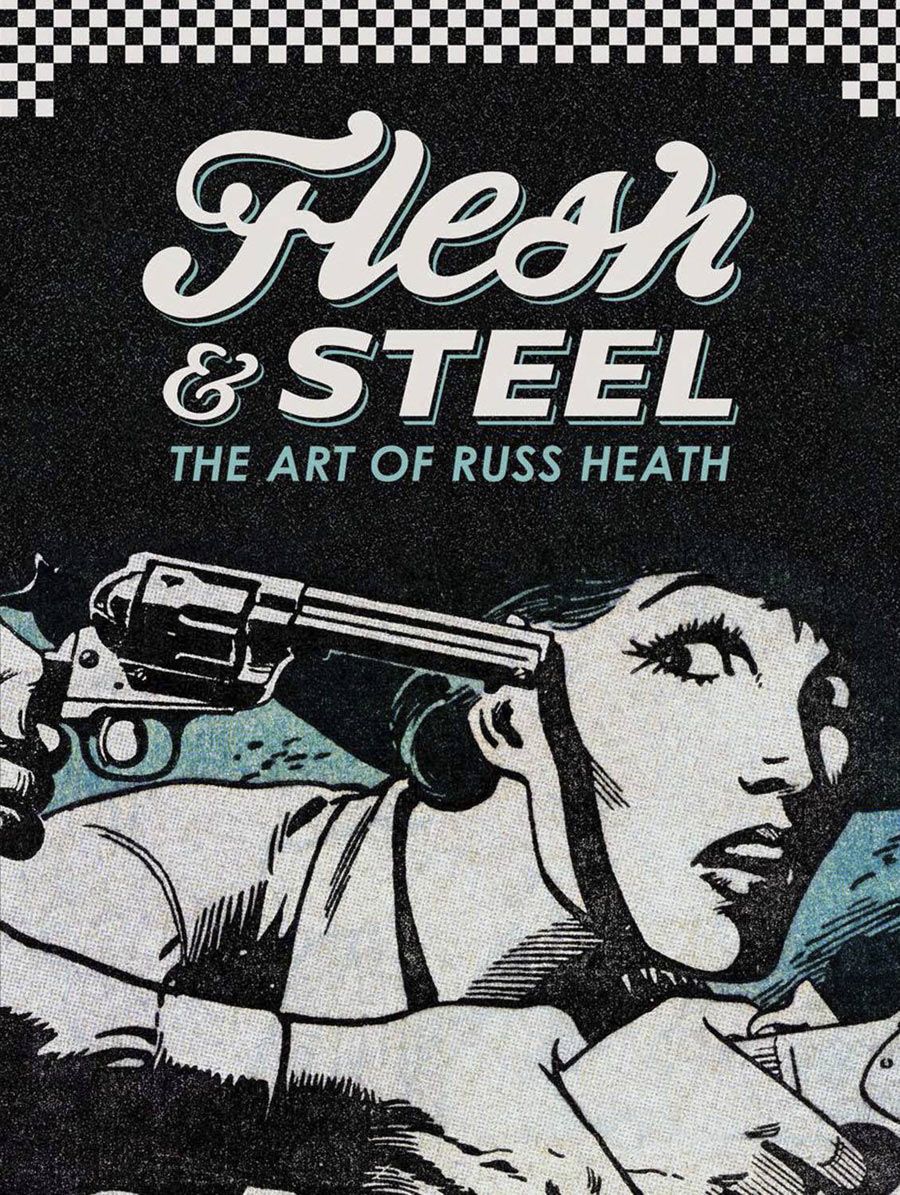In May, at the annual Reuben Awards, the National Cartoonists Society honored Russ Heath with the Milton Caniff Lifetime Achievement Award.
In the words of the announcement: "The award, named for Terry and the Pirates creator and former NCS President and co-founder Milton Caniff, is awarded by unanimous vote of the NCS Board of Directors. It is given for a lifetime of outstanding and accomplished work to a cartoonist who has not previously won the organization's highest honor, the Reuben Award for Outstanding Cartoonist of the Year."
The Reuben Awards have always been dominated by comic strips, and the Caniff Award, which is not awarded every year, has been largely given to many of the great figures in comic books (Will Eisner, Jerry Robinson, Joe Kubert) and other artists who work crosses boundaries and forms (Al Hirschfeld, Ralph Steadman, Frank Frazetta).
Heath deserves to be in such company.
However, modern comic fans may not be familiar with the work of a man who was one of DC Comics' premier artists for decades. It's been years since he drew a book -- his last major credit was illustrating flashbacks for the Fraction/Brubaker/Aja run on "The Invincible Iron Fist," and some illustrations for Dave Sim's "glamourpuss." While Heath co-created many characters over the years, he's never been associated with one character in specific, or even one genre. Heath has never been the biggest artist in the industry, or the most popular, but what he has been for more than seventy years (No, that's not a typo; Heath started working in comics when he was in high school) is a great artist. This is why.
War Comics
Odds are, if you know Heath, you know him because of the war comics that he drew. He drew for EC's "Frontline Combat," Warren's "Blazing Combat," and Marvel's "The 'Nam." He worked on the "G.I. Joe" cartoon show and even drew an issue of the comic book.
Heath made his name working on DC's line of war comics. Alongside writer Robert Kanigher, Heath created The Haunted Tank, drew the first appearance of the team known as The Losers and drew just about every title you can imagine from "Sgt. Rock" to "All American Men of War" to "Our Army at War" to "Enemy Ace: War in Heaven" to "Star Spangled War Stories." Some of them dark, others a little crazy. Some were anti-war, most were not.
Next to Joe Kubert -- a previous recipient of the Caniff Award -- Heath is probably the most notable American war comics artist, and it's easy to see why. Just look at the attention to detail and accuracy in individual panels. I mean, the Haunted Tank sounds insane, like a bad '70s cartoon show. And sometimes it comes off like that, but the weight and the immediacy many of those stories have can mostly be laid at the feet of Heath.
Kubert said of Heath, "Other artists used to keep what they called a swipe file -- pictures of things they may have to draw someday that they could use for reference. Russ' work was so good, other artists used it as reference." It's hard to imagine a truly great artist giving another artist a greabiggerter compliment than that.
Westerns
One genre that is particularly close to Heath's heart is the Western. His father had worked as a cowboy in his youth, and throughout his career, Heath kept returning to telling Western tales. Early in his career he drew "Two-Gun Kid," "Kid Colt," Black Rider" and many other stories for Timely Comics (before it was renamed Marvel Comics). The myth of the West never looked quite so good.
Later in his career, Heath revived "The Lone Ranger" comic strip with writer Cary Bates. Sadly, they got into the action adventure story comic strips at the time that the form was dying out, so it only lasted a couple years in the '80s.
If you're a Western fan, there's a chance you've come across his work more recently. He drew an issue of "Starman" -- the Scalphunter issue near the end of James Robinson's legendary run. He also drew issue #25 of the Jimmy Palmiotti-Justin Gray "Jonah Hex" series in this century.
"Sea Devils"
If there's one series that Heath is more closely associated with than any other, it's "Sea Devils," another co-creation by Heath and Kanigher. It's easy to cynically think of the series as a "Challengers of the Unknown" knockoff that took advantage of the rising interest in the mysteries of the oceans in the '60s. The four team members (whose relationships and dynamics echo the "Fantastic Four," which would debut a year later) were engaged in undersea exploration and adventure, and the series is an odd mixture of the absurd, the fantastic and the realistic. What makes it stand out, though, is the artwork.
Yes, the covers look a bit ridiculous, but just look at the detail Heath put into those images. In truth, the stories come off as a bit ludicrous. Okay, maybe 'ludicrous' is too kind. Just look at this:
Or this:
So, yes, they weren't hard science. They weren't even remotely realistic adventure tales; they tended to be insane -- and not always in a good way -- but Heath's lush, detailed artwork which was composed with as much care and skill as any of his other work make the series stand out. DC's Showcase volume which collects many issues, uncolored, shows how great Heath could be.
Commercial Artwork
Perhaps Heath's most seen work are two pieces of commercial artwork that the artist drew which were often used as advertising in comic books, illustrations used to advertise Roman and Revolutionary War soldier figures. I mean, just look at this. Don't these look like the coolest toys you could possibly get? Aren't these toys you need to send away for because life just won't be as complete and full without them?
In reality, the toys were terrible, but don't blame Heath. As he's mentioned in a few interviews, the scenes he depicted had little to do with the toys, which he didn't see until after he'd drawn the ads. Besides, he never saw any of the money thousands of children mailed in for their own war sets -- he earned a flat fifty bucks.
Humor
Heath wasn't just skilled at illustrating war and adventure and action comics, though. He was a great humorist as well. He drew a handful of stories for the legendary "MAD Magazine," and his work appeared in the recent "MAD: Artists Edition." Heath also drew many comics for the "National Lampoon," "Wild," "Crazy" and the Mark Evanier/Sergio Aragones miniseries "Fanboy."
Just look at "Cowgirls at War," which Heath made for The National Lampoon. It's just as insane (and NSFW) a piece as the title might suggest, but it's also drawn with all of the detail and precision that Heath put into the war and Western comics, which makes it funnier and more absurd.
Little Annie Fanny
Heath worked on the comic for Playboy Magazine when Harvey Kurtzman and Will Elder asked him to lend a hand. Heath came out to Chicago and was put up in the Playboy Mansion, where he proceeded to stay for six months -- until people realized that he wasn't supposed to be there and threw him out.
It's a small footnote in Heath's career, but it's a great story. Don't ask for any salacious details, though -- Mr. Heath is a gentleman.
Roy Lichtenstein
Heath achieved some degree of fame, albeit inadvertently, thanks to Roy Lichtenstein. Lichtenstein copied and reinterpreted the work of Heath and many other comics artists (among them Irv Novick, Jerry Grandenetti, Tony Abruzzo), taking small panels, blowing them up and altering the original's perspective and colors, often eliminating the detail Heath and other artists had painstakingly depicted in the original, smaller images. Lichtenstein made two paintings of Heath's work, Blam! and Brattata, which were both taken from "All-American Men of War" #89
Many have defended Lichtenstein's work and actions, but others feel very differently, including Dave Gibbons who, in a 2013 BBC documentary, referred to Lichtenstein as a "copycat." Lichtenstein referred to himself in similar terms. "I am nominally copying, but I am really restating the copied thing in other terms. In doing that, the original acquires a totally different texture. It isn't thick or thin brushstrokes, it's dots and flat colours and unyielding lines."
In Brattata, Lichtenstein changed the perspective of the gun sight and the control panel. Lichtenstein changed this, presumably, so that the viewer seeing it on the wall would feel as though they were in the cockpit. If Heath -- a stickler for realism and detail -- wanted to achieve that effect, he would never have sacrificed accuracy to do it.
Neither Lichtenstein nor the Roy Lichtenstein Foundation have ever offered to give any credit -- much less money -- to the artists whose work he appropriated. Entertainingly enough, to access the Foundation's website, one has to agree that the images on the site "may not be reproduced, downloaded or modified in any form without the express written permission of the Roy Lichtenstein Foundation."
"Greyshirt: Indigo Sunset"
In the graphic novel written by Rick Veitch (based on the character created by Veitch and Alan Moore) Heath drew one story, "Swiped," about a famous artist named Andy Savannah and an older comics artist named Bernard Novak. Savannah copies old gangster comics Novak drew, turning them into paintings.
The conclusion is entertainingly satisfying, and regardless of one's opinion on Lichtenstein, it should be said that Heath got the last word (and image).
Longevity
It's mind-blowing to think that Heath has worked professionally as an artist for seventy years. Whether drawing drama or comedy, dinosaurs or airplanes, attractive women or mythical creatures, Heath was a master. If he were a generation older, he probably would have been drawing an adventure strip for newspapers and would have likely helped found the National Cartoonist Society. If he were younger, you wouldn't be able to call yourself a comic fan being familiar with his work. If you don't know Heath's work, you owe it to yourself to check it out. There's a reason he's spoken of with awe and respect.
Heath's work can be seen in many books currently on sale. This summer IDW is publishing "Flesh and Steel: The Art of Russ Heath." His comics work can be seen in many volumes including:
Many of the "Showcase Presents" volumes including collections of "Sea Devils," "Haunted Tank," "The Losers," "The War That Time Forgot" and "Sgt. Rock." "Greyshirt: Indigo Sunset." (DC Comics)
"Corpse on the Imjin and Other Stories" (Fantagraphics)
"MAD: Artists Edition" (IDW)
"The Immortal Iron Fist" (Marvel)

